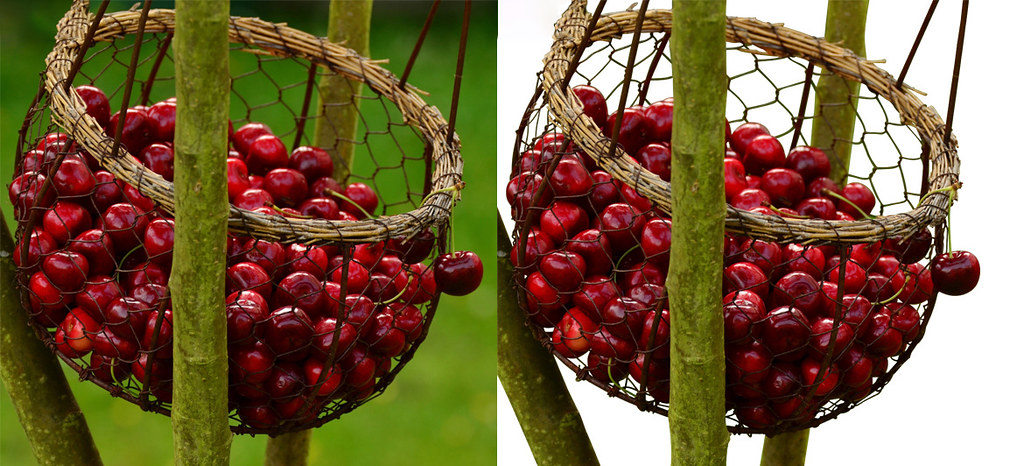While both edit for the same end result, there are several differences between the clipping path and the image masking technique.
Edge of the subject: The clipping path is extremely convenient and can be used for isolating subjects with hard edges. It is easy to create a path and make a selection. Image masking, on the other hand, takes more time and labor.
But image masking produces a better, more natural result for subjects with soft and thin edges. Using a clipping path for such images is not suggested as you will lose the finer details of the subject. If you wish to retain soft edges, there is no alternative to image masking but, you can rely on a clipping path for subjects with defined edges for convenience.
Destructiveness: With the help of a pen tool, you can use the clipping path technique for basic or simple shaped subjects. But after you make a selection and cut it out from the image, you cannot go back to the original image. This is why it is called a destructive action, i.e., it makes permanent changes directly to the image.
When you opt for image masking, you can edit complex subjects while being able to revert the changes made. It is non-destructive in nature, so you can go back to any step and undo the edits. So, the original image is safe from any editing.
Compatibility: Compatibility is very important when it comes to isolating the subject from an image for separation. You should select the techniques you want to apply depending on the subject type. For a few images, you may have a subject with both soft and hard edges.
In such a case, both the techniques can be used since they are compatible. A clipping path can select the defined edges, and image masking can separate the more complex details. Masking is a more complicated process than the clipping path, so use that technique after using the clipping path.
Image type: To choose the best technique, you need to consider the image type. The subject of the image may be sharp-edged or soft-edged; it can have a single color background or a combination of multiple colors. If the subject is hard-edged, opt for the clipping path since it doesn’t really matter whether the background is solid colored or busy, where textures contain multiple colors, opacity and softness levels. Any professional photo editing agency will know how to choose the perfect technique and may even use multiple techniques to achieve the desired result.
If the subject has soft edges and a busy background, choose image masking. Here, a clipping path cannot cut out subjects from such images with a natural-looking result. However, the image masking technique can give you a more satisfactory result.
Harshness and Smoothness: Editing an image using a clipping path requires vector paths. Not all subjects need soft or thin edges, and while product images often require sharp edges, there are some products that contain thin edges. Image masking is the best way to isolate the subject in such images.
Time Consumption: In photo editing services, time is of the essence. Taking too long will hamper productivity. Choosing the right editing method that guarantees the best quality results without compromising the deadline is very important.
Both the clipping path and image masking technique are needed in editing images professionally. We’ve discussed the differences in both methods and mentioned the cases where one would take precedence over the other.
For an amateur, both techniques might seem to be complicated and time-consuming. If you are looking for the best quality results, contact our expert photo editors at Clipixie, an image editing agency in India. Not only will they provide exceptional editing services, but they can also accommodate bulk orders and make your tasks easier.

Really want to say thanks for such a nice blog about Image Editing Services. I would suggest Everyone read this blog. If anyone need to get best Outsourcing Photo Editing Services Visit Image Editing Agency to get quality images.
ReplyDelete